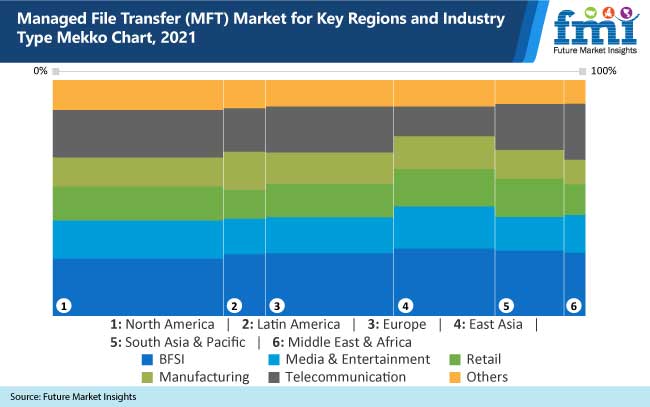Fiber Channel over Ethernet (FCoE) is anticipated to remain at the forefront, offering significant growth opportunities for players in the storage area network market. SAN technology enables fiber channel SAN traffic to be transmitted natively through Ethernet networks, and provides a reduction in capital and operating costs, as well as reducing cooling and power demand. FCoE links connect seamlessly to existing fiber channel SANs, support existing SAN functions such as logical partitioning and security features through existing management software.
The global SAN market is anticipated to exhibit a CAGR of 4% during the forecast period of 2019-2029.
Request report sample to gain in-depth insights https://www.futuremarketinsights.com/reports/sample/rep-gb-802
“SANs provide an opportunity to work directly with end users to customize and design a storage strategy, allowing a system integrator to either expand its consulting services or move beyond a traditional application, server, or hardware solution provider.”
Key Takeaways of Storage Area Network Market Study
- North America is expected to hold a significant share in the global storage area network market during the forecast period.
- Fiber Channel (FC) is expected to hold a significant share in the global SAN market among all technologies during the forecast period.
- By component, the hardware segment is anticipated to retain its significant share in the global storage area network market during the forecast period. This due to the fact that, SANs leverage the high-performance Fiber Channel I/O and consist of a series of hardware components.
- The demand for hypercscale server SAN is estimated to grow at an impressive CAGR. However, enterprise server SAN is estimated to continue to hold significant market share in the global storage area network market during the forecast period.
Explore the full Storage Area Network (SAN) market report with figures, tables and table of contents. Request ToC of the study at https://www.futuremarketinsights.com/askus/rep-gb-802
Increasing Demand for Efficient Data Backup Management to Propel Sales
In the traditional approach of data backup, various backup and restore functions occur over the LAN, which are typically slow and severely impact the efficiency of the whole operation. In contrast, in a server-less data backup solution (SAN approach), data moves seamlessly across the SAN to tape devices, as it does not utilize critical server I/O or CPU resources. This factor is expected to drive the growth of the global storage area network market over the coming years.
More Valuable Insights on Storage Area Network Market
Future Market Insights offers an unbiased analysis of the global storage area network market, providing historical data of 2014-2018 and forecast statistics for the period of 2019-2029. To understand the opportunities in the SAN market, the market has been segmented on the basis of component (Hardware, Software, and Services), SAN type (Hypercscale Server SAN and Enterprise Server SAN), technology (Fibre Channel (FC), Fibre Channel Over Ethernet (FCOE), InfiniBand, and iSCSI Protocol), and vertical (BFSI, IT & Telecom, Energy & Utility, Government, Military & Defense, Healthcare, Manufacturing, Retail & e-Commerce, and Others), across seven major regions.
Buy Now Here@ https://www.futuremarketinsights.com/checkout/802
About Future Market Insights (FMI)
Future Market Insights (FMI) is a leading provider of market intelligence and consulting services, serving clients in over 150 countries. FMI is headquartered in Dubai, and has delivery centers in the UK, U.S. and India. FMI’s latest market research reports and industry analysis help businesses navigate challenges and make critical decisions with confidence and clarity amidst breakneck competition. Our customized and syndicated market research reports deliver actionable insights that drive sustainable growth. A team of expert-led analysts at FMI continuously tracks emerging trends and events in a broad range of industries to ensure that our clients prepare for the evolving needs of their consumers.
Contact:
Corporate Headquarter
Future Market Insights,
1602-6 Jumeirah Bay X2 Tower,
Plot No: JLT-PH2-X2A,
Jumeirah Lakes Towers, Dubai,
United Arab Emirates
Website: https://www.futuremarketinsights.com
